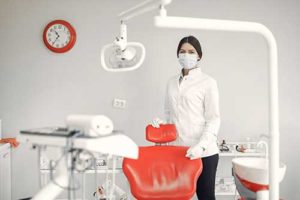If you’ve lost bone in your jaw, you may need a procedure known as ridge augmentation or ridge modification. Ridge augmentation is designed to build up the ridge in your jaw and help regenerate jaw tissue. Our team at Lovett Dental Gulfgate can help you determine if ridge augmentation is right for you. We offer a wide range of specialty dental services and help you or your family improve their oral health.
Signs Indicating Ridge Augmentation Is Needed
 Ridge augmentation may be necessary if you have defects in the lower or upper jaw. Many situations could cause these jaw defects, including:
Ridge augmentation may be necessary if you have defects in the lower or upper jaw. Many situations could cause these jaw defects, including:
- Periodontal disease
- Wearing dentures
- Developmental issues
- Injury
- Trauma
- Loss of a tooth or extraction of a tooth
If you’ve lost a tooth or had a tooth pulled, your jaw begins to lose bone after the loss. If you don’t receive an implant immediately, the jawbone then begins to recede. The receding jawbone leaves an indentation that can affect your appearance and lead to other complications such as temporomandibular joint disorders (TMJ). These TMJ disorders are painful and also affect the mobility of the jaw. Ridge augmentation fixes this indentation and provides stability for an implant or dental restorations.
The Procedure
During the procedure, the gum is first lifted away from the ridge. The bony defect is filled with bone or bone substitute. Your dentist will offer several alternatives for grafting materials, including using your own tissue, that of donors or animals, or synthetics. Using your own tissue instead of tissue from animals or donors lowers the risk of complications and allergic reactions. Synthetic grafting materials, which are used most often, also seldom cause allergic reactions. The grafted materials help to regenerate lost bone and tissue.
Once the grafting is complete, the incision is closed, and healing begins. For the first two days, you avoid strenuous activities, spitting, or using a straw. Until your gums heal, you’ll eat only soft foods; then, you’ll gradually begin to add variety to your diet. You will avoid eating crunchy foods for several weeks. Discomfort disappears after about two weeks. However, full healing can require several months to a year.
Sometimes the implant is placed simultaneously as the ridge augmentation; other times, this occurs four months to a year after the procedure.
Ridge augmentation is generally safe and has a high success rate. It improves your appearance and confidence and prevents deterioration of the jawbone. It also allows for the successful placement of an implant. However, it does carry some risk of complications, including excessive bleeding, graft rejection, an allergic reaction to the graft, nerve damage, abnormal bone growth, and bone resorption. Our periodontist can advise you on how to lower your risk of complications.
Ridge Augmentation Services at Lovett Dental Gulfgate
A periodontist performs ridge augmentation services. Periodontics is a specialty that requires board certification and an additional three years of education beyond a general dentistry degree. Our periodontist has had training in osseous surgery, gum recession, tissue grafting, ridge augmentation, and crown lengthening.
We also specialize in reducing anxieties our patients experience about dental work. We can sedate those with gag reflexes, a low pain threshold, sensitive teeth, or high anxiety to keep them comfortable.
If you need ridge augmentation services, your chances of success are better the earlier you receive them. If you’ve lost a tooth, contact us as soon as possible.
Lovett Dental Gulfgate offers a full spectrum of general dentistry and specialty services all under one roof. In addition to our excellent periodontics staff, we also have some of the country’s finest cosmetic dentists. Other specialties include:
- Oral surgery
- Pediatric dentistry
- Orthodontics
- Endodontics
Contact us a call at 713-847-8822 to become part of our patient family today.
